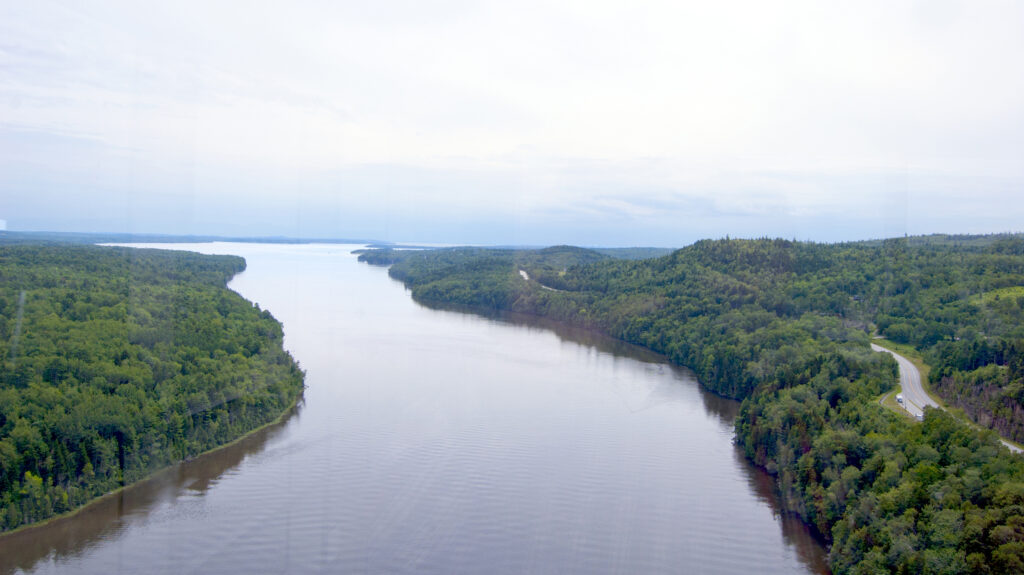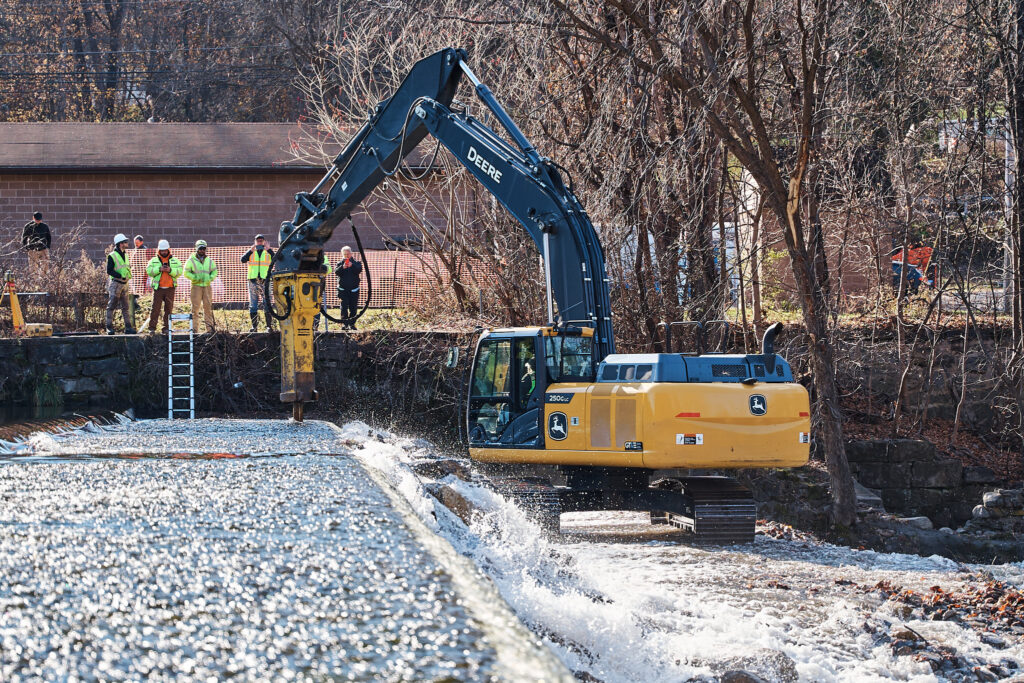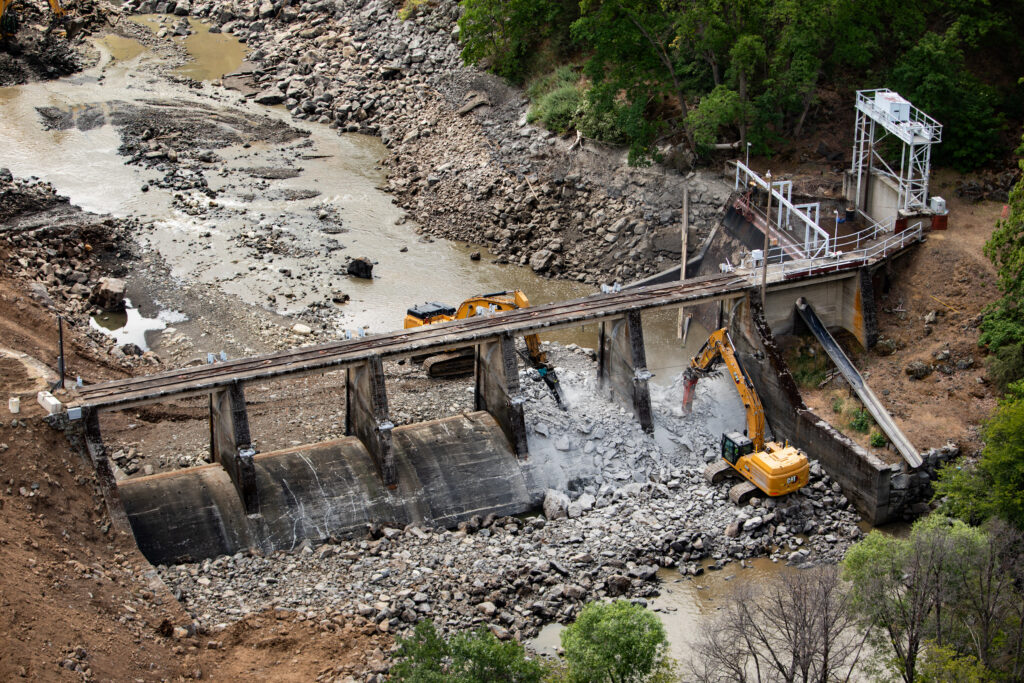Balancing healthy rivers and hydropower
Representatives of the hydropower industry and the conservation community are coming together to find common ground on the role of hydropower in addressing climate change while also restoring free-flowing rivers.

American Rivers was founded nearly 50 years ago, in 1973, to fight construction of new dams and protect our nation’s remaining wild, free-flowing rivers. We have carried on those fights ever since – and we have expanded our focus. American Rivers has been instrumental in sparking a national, and now global, movement to restore rivers by removing dams. And for decades, we have worked with the hydropower industry to reform how dams are operated in order to minimize their harmful impacts.
For the past two and a half years, American Rivers has participated in the Uncommon Dialogue, convened by the Woods Institute at Stanford University. The dialogue brought together representatives of the hydropower industry and the conservation community to find common ground on the role of hydropower in addressing climate change while also restoring free-flowing rivers.
We’re at a pivotal moment and it is critical that we find solutions. Hydropower dams have devastated river health nationwide, with significant negative impacts on rivers, fish and wildlife populations, and cultural resources. There are also serious safety issues with dams, as evidenced by the failure of Michigan’s Edenville Dam in May. At the same time, climate change is threatening life as we know it on our planet. We must be proactive in ensuring a mix of energy sources that don’t rely on dirty fossil fuels – and that includes hydropower.
Recently, participants in the dialogue agreed on a Joint Statement of Collaboration in which the parties agree to continue to work together to make progress in seven areas:
1. Accelerate Development of Hydropower Technologies and Practices to Improve Generation Efficiency, Environmental Performance, and Solar and Wind Integration
2. Advocate for Improved U.S. Dam Safety
3. Increase Basin-Scale Decision-Making and Access to River-Related Data
4. Improve the Measurement, Valuation of and Compensation for Hydropower Flexibility and Reliability Services and Support for Enhanced Environmental Performance
5. Advance Effective River Restoration through Improved Off-Site Mitigation Strategies
6. Improve Federal Hydropower Licensing, Relicensing, and License Surrender Processes
7. Advocate for Increased Funding for U.S. Dam Rehabilitation, Retrofits and Removals
In addition to American Rivers, parties to the Joint Statement include American Whitewater, Hydropower Reform Coalition, and National Hydropower Association.
In agreeing to the Joint Statement of Collaboration, American Rivers recognizes that hydropower can be part of the solution to climate change. At the same time, the hydropower industry is recognizing that the time is ripe for removal of obsolete and unsafe dams which restores free-flowing rivers.
The Joint Statement of Collaboration does not mean that American Rivers and the hydropower industry will see eye to eye on everything. American Rivers is fighting efforts supported by the hydropower industry to weaken Clean Water Act protections for rivers. We are working with tribes and conservation partners to ensure that Pacificorp lives up to its commitments to remove four dams on the Klamath River in California and Oregon and install fish passage improvements on another dam it operates on the Lewis River in Washington. By signing the Joint Statement of Collaboration though, American Rivers hopes that such conflicts will become less frequent as we build greater trust. American Rivers is continuing our role as pragmatic problem-solvers, seeking some common ground with the hydropower industry where it will advance our goal of removing obsolete and unsafe dams to restore healthy, free-flowing rivers and employing every tool available to fight the existential threat of climate change.




4 responses to “Balancing healthy rivers and hydropower”
AR is doing a commendable job by trying to
Understand the very intricate link between
ecological vigor of a river and Hydropower development.I think you people are on right track.Keep it aligned with emerging climate change trajectory.
We second Steve Hawley’s remarks above.
To say we are disappointed to see AR participating in this “collaboration” is an understatement. The organization has allowed itself to be used to greenwash dirty destructive hydropower that is not clean, green or renewable energy. It has thrown the rest of the river and social and environmental justice advocates fighting for free flowing rivers and communities under the bus. It is particularly troublesome that you disregard entirely the impact that your complicity in this greenwashing will have on Indigenous communities. Are you completely unaware of the work of Wa Ni Ska Tan, http://www.hydroimpacted.ca and others on this issue? Your support for this “collaboration” is already being used by Hydro-Quebec and others to promote the export of hydropower from stolen Indigenous lands and construction of new dams and transmission corridors to the U.S.
Apparently, you have bought into the hydro industry myopic, childlike myth that because precipitation keeps falling from the sky, the electricity produced by collecting it in massive artificial reservoirs and releasing it downstream in response to consumer demand is somehow “renewable”. This ignores the irreversible destruction of species, forests and river systems and displacement of communities. And then you promote the falsehood that hydro is a “climate solution.” The reality is that it is a climate disaster. Have you not read the peer reviewed science that the methane and CO2 emissions are on par with fossil fuels? Where is the GHG accounting in the IPCC and state GHG inventories for the direct emissions from generating this hydroelectricity? It is not “zero carbon” or even “low carbon” as the hydro industry claims.
We will be responding in a more formal manner. In the meantime, your unfortunate involvement and assent to use your name to greenwash hydropower is a disservice to the climate, Indigenous communities, river systems, forests and biodiversity worldwide. It is shameful and you should withdraw from this effort and issue a retraction.
We encourage anyone interested in this issue to read the statement of collaboration (linked in Bob’s blog, above). As you’ll see, we’re agreeing to continue talking and exploring key issues.
The position of American Rivers has not changed. For decades, we’ve supported reforms to hydropower and we continue to lead the movement to tear down dams and restore rivers nationwide. Our dam removal work is stronger than ever, and these current conversations with the hydropower industry don’t change that.
We’re pursuing these discussions with industry because we believe we can make progress for river restoration, and because we must address climate change. Hydropower is already part of that conversation, so we must make sure it’s done right. American Rivers does not support construction of any new hydropower dams.
Regarding methane, when you read the statement of collaboration you’ll notice a commitment to study that important issue.
And with regard to Glen Canyon, decommissioning Glen Canyon Dam makes little political, financial, legal, or ecological sense right now. Politically, water users throughout the Colorado Basin are focused on working together to reduce water use to decrease water supply risk for cities, farms and the environment in the face of climate change and continued drought. There is little appetite among the Upper Basin states, water users, and other stakeholders to pursue a decommissioning strategy when implementing water reduction solutions is proving to be a heavy lift itself. While storing Lake Powell Water in Lake Mead may be legally viable – at this time, it would be nearly impossible to marshal support from the seven basin states to move forward on a “Fill Mead First” strategy.
Ecologically, recent science shows that Pierce Ferry Rapid on the upstream end of Lake Mead has served as a fish barrier for non-native predatory fish in Mead – resulting in the continued recovery of the humpback chub in Grand Canyon. If Mead water levels were to rise as a result of the decommission of Glen Canyon Dam and flood Pierce Ferry, predatory fish in Mead could travel up the Grand Canyon and put the recovery of the humpback chub in jeopardy.
Which is all to say — wherever we work, we follow the science and try to get the best possible result for the river and its communities. These are difficult issues but I think our track record for nearly 50 years shows that time after time, our persistence, expertise and creativity pays off for healthy rivers.
Giving away concessions to the hydropower industry in the name of mitigating climate change is a fool’s errand. The growing body of science on methane emissions from reservoirs has established that dams make a significant contribution to climate change.
“Accelerating the development of hydropower technology,” or “Increasing valuation of and compensation for hydropower flexibility and reliability,” don’t sound like goals a river advocacy organization should pursue…nor for that matter, does “offsite mitigation,” which pretends that planting willows on tributary creeks could somehow ameliorate the damage a large dam does. Coupled with AR’s support of keeping Glen Canyon Dam as part and parcel of their support for status quo water management on the Colorado Basin, AR’s support of the expansion of Gross Reservoir in Denver in exchange for “offsite mitigation” upstream, and their support of new dams in the Yakima Basin in Washington State, it doesn’t seem like AR is interested in “balancing healthy rivers and hydropower,” so much as it operates too often as a greenwashing service for the hydropower industry. This kind of Doublethink makes it difficult for more honest healthy river advocates to do their work, since they are not only now fighting industry, but now the quislings in leadership roles at American Rivers as well.